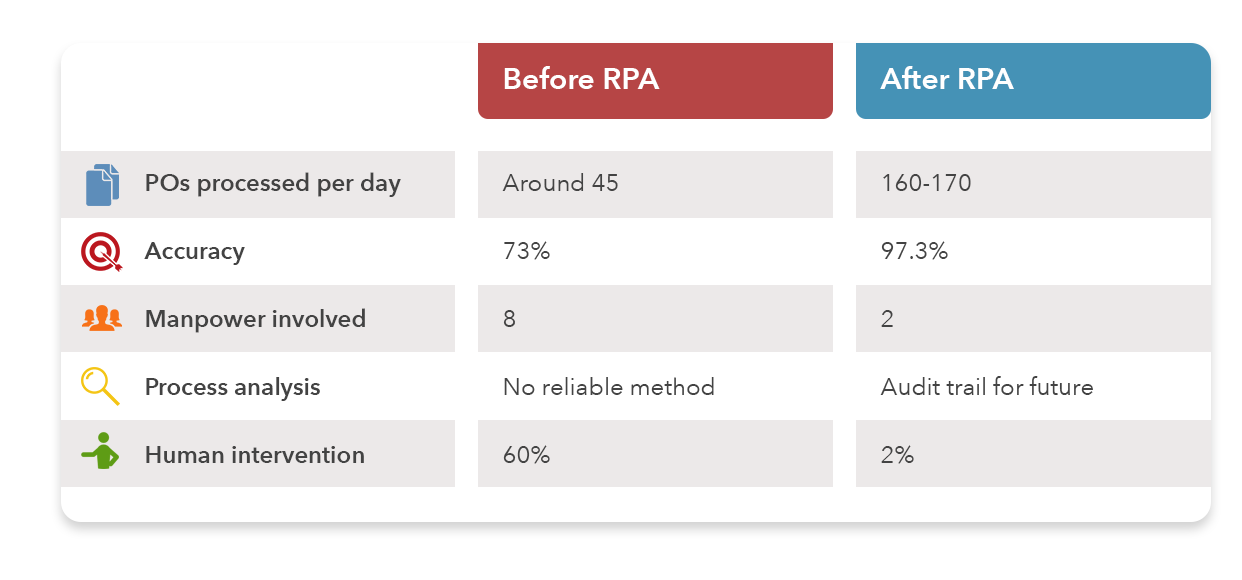Challenges and the fix
Errors like incorrect quantity and items, delayed approvals, and inaccurate delivery date were plaguing the purchase order (PO) validation process. Dealing with numerous vendors and businesses daily, it receives an overwhelming number of electronic POs that were processed manually, an error-prone practice. Consequently, sales were suffering and the bottom line was taking a hit.
The team deployed by Nalashaa studied the entire process, identified loopholes, estimated the damages, and decided process automation as the best fix. With a process overhaul, it listed down the long-term implications of RPA, process stability, and scalability. The team then integrated RPA bots with the system and ensured optimized performance with rigorous testing.
The process
- Step-1: As POs are shared over emails, bots identify and segregate such emails, extract the PO, and validate its format. Stakeholders are alerted on the validation status.
- Step-2: Database information is referred to for validating sender details and items.
- Step-3: Bots extract the article quantity and check it against the latest inventory updates.
- Step-4: The sender gets an auto-response mentioning the order status and estimated delivery date. The fulfillment team gets a notification and if items are out of stock, all stakeholders are alerted.
- Step-5: For POs sent in an invalid format, alerts are sent to all stakeholders.
The Payback

Technology Stack
- UI Path
- Google Tesseract
- .Net
- ML
Transform your business with RPA
Purchase order validation, invoice automation, and payment process automation are a few examples of the advantages offered by RPA. The scope of RPA application is much wider and by smartly leveraging RPA, we have injected process efficiency and cost savings into several businesses. To know how RPA can elevate your business to the next level, have a quick word with our RPA experts.
